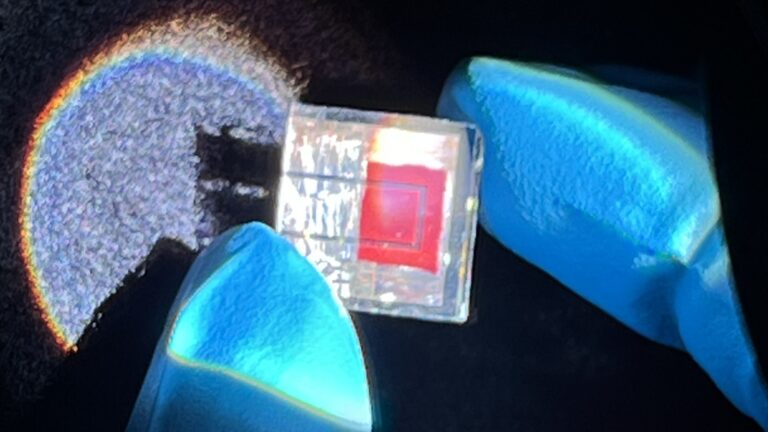
Photo credit: C. Thee Vanichangkul
Researchers have developed a revolutionary solar panel system that can increase the total amount of clean energy that solar panels can produce.
Solar energy is a promising energy source that is significantly cleaner than traditional dirty fuels. However, current solar panels often require high-temperature manufacturing processes that produce large amounts of carbon. On top of that, traditional solar panels only absorb a small portion of infrared and ultraviolet light, meaning a large portion of sunlight is not converted into usable energy.
Researchers have developed a new solar panel system to address these challenges. In a recent study published in the journal Nature, a team of scientists combined two emerging solar cell technologies, perovskite solar cells and organic solar cells, to create what they call “tandem solar cells” that can absorb sunlight over a wide range. created.
Perovskites are a type of material designed to absorb the blue and green wavelengths of sunlight and convert them into electricity. Organic solar cells are a type of photovoltaic power generation, also known as PV, that use carbon-based materials to absorb red and infrared light.
In theory, combining the two could potentially convert more solar energy into electricity than traditional solar panels. Unlike silicon cells, perovskite and organic solar cells can be manufactured at low temperatures, which greatly reduces the environmental impact of their production.
By combining the two materials, the tandem solar cell produced solar energy with a “record-level” efficiency of 25.7%. This means that a solar panel that combines perovskite and organic materials can generate more than a quarter more energy than a typical solar panel from the same amount of sunlight.
The progress, led by physicist Dr. Felix Lang of the University of Potsdam and collaborators at the Chinese Academy of Sciences in Beijing, marks an important milestone in solar power technology.
“This was only possible by combining two major advances,” Lang told Techxplore.
The Sun’s breakthrough is good news for the Earth. Changing the materials used to make solar panels reduces the carbon impact of solar cell manufacturing and combats climate change. The production of cleaner energy reduces air pollution, reducing the risk of respiratory and cardiovascular disease in nearby communities.
🗣️ If you were to install solar panels on your home, which of the following factors would be your main motivation?
🔘 Energy independence ⚡
🔘 Reduce your electricity bill 💰
🔘 Help the Earth 🌎
🔘 There is no possibility of going solar 🚫
🗳️ Click on your selection to see the results and have your say
The economic benefits are also greater. High-efficiency solar cells can generate more power with fewer panels, saving homeowners and businesses money on their electricity bills. If deployed at scale, these cells could accelerate the adoption of rooftop solar power and make commercial and residential buildings less dependent on dirty energy.
This innovation joins a growing list of solutions aimed at increasing solar power efficiency. Saudi Arabian researchers have developed technology to reduce overheating in solar panels, and Spanish startup Soltech is collaborating with a German research group to develop a micro-engineer that it claims has the potential to increase solar energy production by 30%. Working on technology development.
Tandem solar cells are not yet on the market, but their low-temperature production processes and efficiency make scaling up solar cells a realistic goal. As researchers continue to improve the technology, consumers and industry alike can expect to see these cells integrated into solar energy systems in the near future.
Join our free newsletter for weekly updates on the latest innovations that are improving our lives and shaping our future. Also, don’t miss this cool list of easy ways to help yourself while helping the planet.


